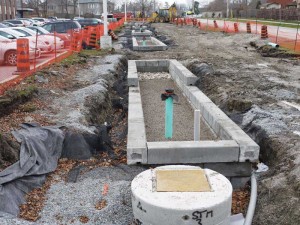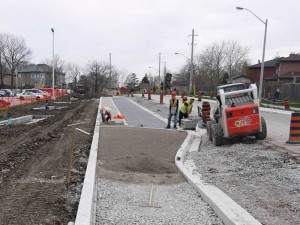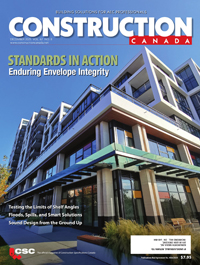Clean-water Technology: Low-impact development coming to a neighbourhood near you

The Center for Watershed Protection (CWP), based in Ellicott City, Md., conducted a survey of 72 LID practices in Southern Virginia’s James River Watershed. Each of the LID practices as constructed was compared to the municipally approved stormwater design plan. The evaluation found 47 per cent were observed to have one or more deviations from the site plan, many in ways that significantly impaired the required performance. (See David Hirschman and Laurel Woodworth’s 2010 article, “Design, Construction, and Maintenance of LID Practices: Results from a Field Assessment in Virginia’s James River Watershed” from Low-impact Development 2010: Redefining Water in the City ASCE Conference Proceedings). The most common deviations were:
- poor vegetation coverage and health;
- missing or improperly constructed pre-treatment devices;
- undersized retention and detention volumes;
- soils clogged with construction sediment, are compacted, or do not meet specification; and
- inlets and outlets incorrectly constructed, resulting in flows bypassing or short-circuiting the practice.
This knowledge gap has been apparent in CVC’s own experience in the early implementation of LID projects within the Credit River Watershed. Several LID projects have required post-construction repairs to correct inlet and outlet invert elevations, replaced engineered soil that did not meet specification, and re-graded blocked or bypassed inlets. If sound LID designs continue to be improperly constructed, LID will get a poor reputation among the public and decision-makers. Therefore, it is critical contractors and inspectors understand the purpose of LID practices as a new form of stormwater management.
Guidance and training
In 2010, a CVC-led partnership initiative was launched to develop guidance and training to educate the construction industry. As a first step, CVC has created two LID construction guides with a team from a LID construction firm in the United States—Emmons & Olivier Resources Inc.—as well as an experienced Ontario firm—Sabourin Kimble & Associates Ltd.
The LID Construction Guide assists engineers, project managers, and site supervisors in translating LID designs into plans, specifications, and in contract documents to ensure practices are properly constructed. The Contractor’s and Inspector’s Handbook to LID Construction is an illustrative and condensed version of the LID Construction Guide and is intended for the contractor and inspector on the project site.
While many jurisdictions in North America have developed LID design guidance, none have developed educational material directed toward the issue of LID construction. This guidance has already been picked up by stormwater project managers in California, Minnesota, and Germany wishing to educate their contractors on proper LID construction.
The content of these guides was the basis of a training program for construction professionals—LID Construction Workshop for Engineers and Contractors—offered earlier this month as part of the annual Making it Work LID Conference. (Since 2008, Credit Valley Conservation (CVC) has held yearly Low-impact Development (LID) Leaders in Action conferences to educate stakeholders involved in LID implementation. To download presentations from CVC’s LID conferences, visit www.creditvalleyca.ca/lid-events. For more on various in-the-ground LID projects, visit www.creditvalleyca.ca/green-projects-map). A steering committee of stakeholders from the province, conservation authorities, municipalities, construction firms, design firms, and developers has helped shape the content of the guidance and training workshop.

Communication is key
Communicating the LID purpose, along with the design and construction steps, is critical. This needs to happen at pre-bid meetings, pre-construction meetings, weekly construction meetings, and particularly during hand-off moments between contractors and sub-contractors.
Through the authors’ experiences, CVC has found it necessary to clearly communicate the design to the contractors during the step-by-step implementation process. One consideration to ensure clear communication is developing clear, thorough specifications to prevent construction error to the maximum extent. Another important consideration as the construction process moves from excavation to final landscaping and stabilization is simple verbal communication of critical specifications and information. For the contractor or inspector for which LID is a new concept, stringent supervision by engineers is key. This allows the contractor to ask questions and have them instantly addressed rather than continuing construction based on assumptions.
Tendering for success
A mandatory pre-bid meeting that includes outlining the project’s unique LID aspects have been successful in attenuating non-serious bidders and attracting many qualified contractors to the project. Other useful methods to obtain experienced bidders include using a pre-qualification process and requesting prime contractors to furnish a list of projects completed with references.
Many times, binding construction and plant installation along with landscape establishment responsibilities—which can extend years beyond construction—has proven to be a logistical headache for both the owner and contractor, given sureties and payments are strung over this period. Often, writing a separate specification and contract for the construction and landscape establishment is beneficial. The landscape establishment contract typically runs two to five years after completion and can cover planting, establishment (including watering as necessary), plant material warranties, and maintenance of the practices.
Since there are always unforeseen construction conditions and badly timed storm events, a separate line item in the construction documents for emergency erosion control is one strategy to ensure erosion control is performed properly and contractors are paid for their additional work. This helps protect the owner because the contractor has little reason to avoid addressing erosion and sediment control issues as they arise if they know they will get paid for proper work performed.







